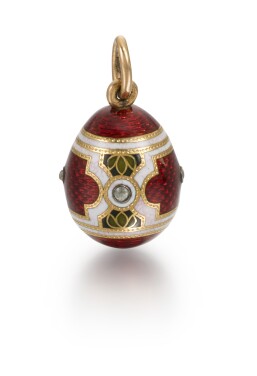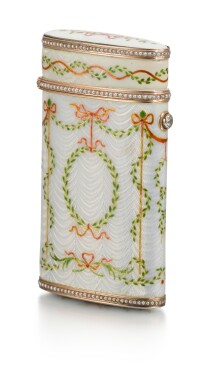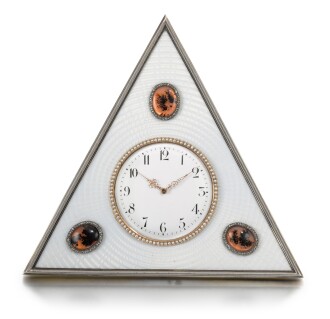Past Lots by Michael Perkhin
Michael Perkhin Biography
In his unfortunately short-lived career, Michael Evlampievich Perkhin played an instrumental role in the modernisation of Fabergé. The high-pressure and dynamic lifestyle necessitated byu Perkhin’s work as Chief Workmaster for Fabergé was a stark contrast to his rural upbringing. Perkhin’s father was a peasant belonging to the obelnyi, the class of peasants whose ancestors had earned exemption from taxes and duties due to singular service to the monarch. In their small village of Okulovskaya on Lake Onega, the village Church was the centre of the community. Its deacon, Father Matvey Mattheus, was the young Perkhin’s godfather. As there did not yet exist a general schooling system throughout Russia, the clergy were the only literate members of these village communities. Father Matvey thus taught Perkhin how to read and write, and about Orthodoxy. This upbringing was to be of great significance later in his career.
Perkhin’s introduction to art also came through his village Church of St Nicholas - even in small village churches one would find ornate iconostases and icons with highly decorative oklads, created by skilled craftsmen. The young Perkhin was inspired by this artwork to begin practising in metalwork himself, likely under the supervision of the local blacksmith. At eighteen years of age, he left his village to become a goldsmith in St Petersburg. Here, he landed himself an apprenticeship in the workshop of the renowned Erik Kollin. Within six years, he had become a journeyman and also married Tatiana Vladimirovna Finikova, daughter of Bolin’s head workmaster Vladimir Iakovlevich Finikov. After another two years, in 1886, he became a master craftsman and opened his own workshop.
In 1888, Carl Fabergé was looking to rebrand the company. He replaced Chief Workmaster Erik Kollin with Michael Perkhin and instigated a great shift in direction of the company’s production. By this point in time, there was a tendency among St Petersburg jewellers towards large, gaudy and extravagant pieces. Carl Fabergé, on the other hand, wished to showcase design and craftsmanship above material value and to portray his firm as one of jewellery artists instead of jewellery retailers (U. Tillander-Godenhielm, Fabergé: his masters and artisans, Unicorn, 2018, p. 74). This shift was spearheaded by Perkhin and his workshop. From this point on, ‘[t]he design thinking was to preserve the style of past centuries, but to apply it to objects very much of the present. In lieu of the old snuffboxes, there were cigarette cases and compacts, and in place of decorative objects with no earthly purpose, we produced table clocks, ink bottles, ashtrays, bell-pushes, and so on’ (Franz Birbaum as quoted in T. and S. Fabergé, History of the Fabergé firm: According to the recollections of the Head Designer of the Firm Franz P. Birbaum, St Petersburg, published privately, 1992, p. 5). It was at this time Fabergé also began producing small, intricately carved animal figures and flower arrangements.
Perkhin’s Orthodox upbringing played a key part in his success at Fabergé. Fabergé’s other workmasters were predominantly of the Evangelical Lutheran faith. However, the clientele the company served was largely Orthodox. Therefore, it was essential to have a workmaster who understood Orthodox culture and could infuse the works with a sensitivity towards the customer’s beliefs.
Perkhin received two significant awards during his career. In 1891, he became a Member of the 2nd Guild. In 1899, he was granted Personal Honorary Citizenship, which was recognised as an official imperial award. However, Perkhin’s success was cut short. Fourteen years of immense pressure as Chief Workmaster during Fabergé’s period of maximised production took its toll on Perkhin’s mental and physical health. He passed away in 1903 at the mere age of forty-three. Today, his work can be found in international collections, with one of his arguably most notable pieces, the Clover Leaf Imperial Easter Egg of 1902, in the Kremlin Museum.
Read Less






















